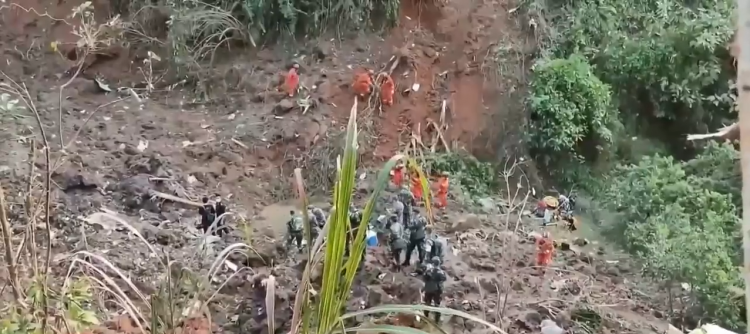Rescuers combing a mountaintop in Nepal uncovered the bodies of 17 of the 22 people on a plane that crashed the previous day, according to officials.
The search for the remaining passengers continues, according to airline spokesperson Sudarshan Bartaula.
The Tara Air turboprop Twin Otter lost communication with the airport tower on Sunday while flying in an area of deep river gorges and mountaintops on a scheduled 20-minute flight.
The Tara Air turboprop Twin Otter lost communication with the airport tower on Sunday while flying in an area of deep river gorges and mountaintops on a scheduled 20-minute flight. He stated that rescuers using their bare hands were unable to dislodge the metal debris.
Tara Air said four Indians and two Germans were aboard the aircraft. It was stated that the three crew members and other passengers were Nepalese nationals.
According to local news accounts, the wreckage was discovered by villagers who were hunting the area for Yarsagumba fungus, also known as Himalayan Viagra.
Bishal Magar, a villager, was quoted on the Setopati new website as claiming that they learned about the missing jet on Sunday but were only able to reach the crash scene on Monday morning by tracking the odor of fuel.
Magar stated that it appeared the plane may have collided with the peak of a smaller mountain before striking a larger mountain.
Local news accounts disclose among the passengers were two Nepalese families, one with four members and the other with seven.
In an initial assessment, the army said the plane crashed in Sanosware, Mustang district, close to the alpine town of Jomsom, where it was headed after taking off from Pokhara, 200 kilometers west of Kathmandu.
Aerial photographs of the accident site revealed aircraft pieces strewn across the rocks and moss of a mountain valley.
The 43-year-old aircraft took off from Pokhara at 9:55 a.m. and broadcast its last signal at 10:07 a.m. at an altitude of 12,825 feet, according to tracking data from flightradar24.com.
Foreign hikers who traverse its mountain paths and Indian and Nepalese pilgrims who visit the famed Muktinath temple frequent the destination of the plane.
According to aviationnepal.com, the Twin Otter, a durable aircraft originally manufactured by Canadian aircraft company De Havilland, has been in service in Nepal for almost 50 years and has been involved in approximately 21 accidents.
With its top-mounted wing and fixed landing gear, this aircraft is highly regarded for its durability and ability to take off and land on short runways.






